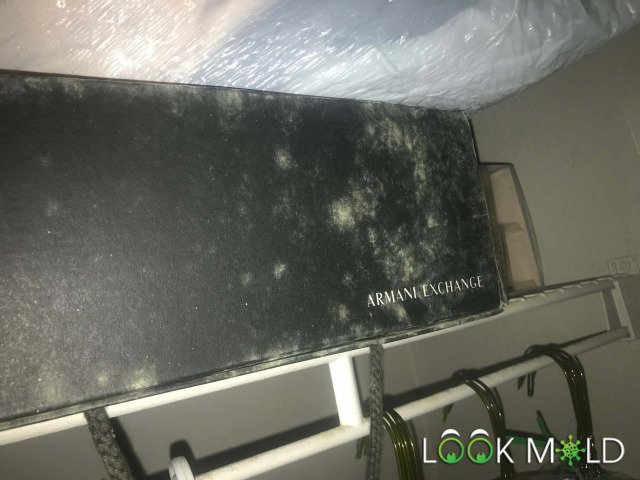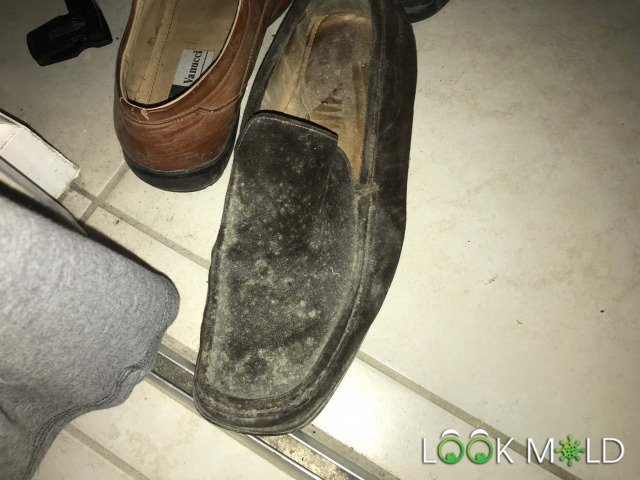White Mold: Dangers Identification & Safe Removal
Expert insight by: Brad Fishbein, Licensed Mold Assessor
Updated April 5, 2025
If you’ve found a white, fuzzy growth in your basement, on your furniture, or inside a closet, you’re probably wondering if it’s mold — and if so, whether it’s dangerous.
As a licensed mold assessor, I’ve inspected hundreds of homes where white mold showed up in places homeowners didn’t expect. The truth is, white mold can be just as serious as the darker varieties — especially if it’s allowed to grow unchecked on building materials or fabric.
“All molds have the potential to cause health effects,” warns the EPA.
They can produce allergens, irritants, and even mycotoxins in some cases.
EPA – A Brief Guide to Mold, Moisture, and Your Home
What Is White Mold?
“White mold” isn’t a single species. It’s a general term used for molds that appear white or light gray — especially in early stages of growth. These include species like:
- Cladosporium
- Penicillium
- Aspergillus
White mold often grows in cool, damp areas and feeds on materials like:
- Wood
- Drywall
- Carpets and upholstery
- Paper, cardboard, and books
- Clothing and leather
- Even houseplants and food
According to the CDC, mold is present indoors and outdoors year-round, and all it needs is moisture to grow.
CDC – Mold and Health

What White Mold Looks Like
White mold can be tricky to spot because it doesn’t stand out. In fact, many people ignore it at first, thinking it’s just dust, cobwebs, or mineral buildup.
Here’s a quick overview of where I usually see it — and what it’s commonly confused with:
| Where It Grows | Appearance | Common Misidentification |
|---|---|---|
| Unfinished wood | Fluffy, dusty patches | Dust or sawdust |
| Drywall or ceiling tiles | Powdery white splotches | Paint issues or spider webs |
| Concrete walls | Chalky or crystalline film | Efflorescence (salt deposits) |
| Clothing or fabric | Spotty growth, sometimes slimy | Soap residue or lint |


Unsure if it's mold or salt?
Try this: spray a little water on the area.
- If it dissolves, it’s probably efflorescence.
- If it stays in place, you’re likely dealing with mold.
Want to compare white mold to other types?
👉 See our guide to common mold types
How White Mold Differs from Black Mold
When people think of dangerous mold, they often picture the dark, slimy stuff. But white mold can also be problematic, especially if it’s colonizing porous materials or circulating through HVAC systems.
Here’s how they compare:
| Feature | White Mold | Black Mold (Stachybotrys) |
|---|---|---|
| Color | White, gray, or pale | Dark green to black |
| Typical Surfaces | Wood, fabric, concrete | Wet drywall, paper, insulation |
| Texture | Powdery or fluffy | Slimy or sticky when wet |
| Health Concerns | Varies — can trigger allergies | High — produces mycotoxins |
Interested in learning more about toxic mold?
Read our in-depth guide to black mold
When White Mold Becomes a Health Risk
I often remind homeowners: just because mold is light in color doesn't mean it’s harmless. White mold can cause health issues — especially for those with allergies, asthma, or weakened immune systems.
Warning signs to watch for:
- Musty smell in a room or crawlspace
- Frequent sneezing, coughing, or sinus pressure
- Skin rashes or irritated eyes
- Fatigue or headaches that go away when you leave the space
OSHA notes:
“The severity of mold-related symptoms depends on the type and extent of mold, duration of exposure, and the individual’s sensitivity.”
OSHA – Safety and Health Topics: Mold
How to Clean White Mold (Safely)
If you’re dealing with mold on non-porous surfaces like tile or sealed wood — and it’s caught early — you may be able to clean it yourself.
What You’ll Need:
- Gloves, goggles, and an N95 mask
- A soft-bristle brush or sponge
- Cleaning solution such as:
- White vinegar (undiluted)
- Borax and warm water
- EPA-registered mold cleaner (Concrobium or Vital Oxide)
Step-by-Step:
- Ventilate the space.
- Apply your cleaner and let it sit for 5–10 minutes.
- Scrub gently to lift the mold.
- Rinse and dry the area completely using a fan or dehumidifier.
If the mold is growing on drywall, insulation, or fabric, surface cleaning won’t be enough. You’ll need to cut out and replace affected materials or bring in a licensed mold professional.
What Kills White Mold?
Here’s a quick breakdown of what works — and when to call in the pros:
| Product | Best Use | Notes |
|---|---|---|
| White vinegar | Countertops, tile, sealed wood | Safe, cheap, and non-toxic |
| Borax solution | Wood framing, concrete, crawlspaces | Helps prevent mold from returning |
| Vital Oxide / Concrobium | Most indoor surfaces | Registered antimicrobial cleaners |
How to Prevent White Mold
The key to stopping mold before it starts? Moisture control.
Even the cleanest home can grow mold if humidity levels stay high or a leak goes unnoticed.
Prevention Checklist:
- Keep humidity under 60% (use a hygrometer to monitor)
- Run a dehumidifier in basements and bathrooms
- Ventilate closets, crawlspaces, and laundry areas
- Dry any water-damaged items within 24–48 hours
- Avoid leaving damp clothes in hampers or washers
According to the EPA Mold Course:
“Controlling moisture is the key to mold control.”
EPA Mold Course – Chapter 1Need help spotting signs of mold?
👉 Read our full guide to mold detection
White Mold on Clothing
I’ve seen plenty of moldy shirts and jackets after a humid summer or a burst pipe. White mold loves fabric because it feeds on natural fibers like cotton and linen.

Causes:
- Damp clothes left in a basket or closet
- High humidity with poor airflow
- Flooded basements or laundry rooms
Cleaning Moldy Clothes:
| Fabric Type | What to Do |
|---|---|
| Cotton, linen | Wash in hot water with vinegar or borax |
| Delicates (wool, silk) | Use CO₂ dry cleaning or discard |
| Items soaked in floodwater | Best to discard due to health risk |
Where Else White Mold Might Be Hiding
- Wood framing in basements and attics
- Stored furniture in garages or storage units
- Books and boxes in humid closets
- HVAC vents and ductwork
- Concrete walls in unfinished basements
Final Thoughts from Brad
If you can see white mold — even if it looks harmless — it’s worth investigating. Sometimes it’s surface-level and easy to handle. But other times, it’s just the tip of the iceberg.
Whether you're trying to clean it yourself or deciding if it's time to call in help, remember: mold isn’t something to ignore.
FAQs About White Mold
What exactly is white mold?
White mold refers to any mold that appears white or pale in color, including species like Cladosporium or Penicillium. It's commonly found in damp environments on materials like wood, drywall, and fabric.
Is white mold dangerous?
It can be. While not all white mold produces toxins, it can cause health issues in sensitive individuals and damage building materials if left untreated.
How do I tell the difference between white mold and efflorescence?
Spray water on it. If it dissolves, it's probably efflorescence (a harmless mineral). If it stays put and feels fuzzy or soft, it’s likely mold.
Can I clean white mold myself?
If it’s on non-porous surfaces and the area is small, yes — using vinegar, borax, or an EPA-registered cleaner. Always wear protective gear.
How do I keep white mold from coming back?
Control humidity, fix leaks quickly, ventilate damp areas, and don’t let water-damaged items sit for more than 48 hours.
Explore Related Topics:

Meet the author: Brad Fishbein is an ACAC council-certified Microbial Investigator. In the fall of 2012, he became a Licensed Mold Assessor in the State of Florida through the Department of Business & Professional Regulation. Brad has helped homeowners with over 5,000 successfully completed Mold Inspections since 2009.

